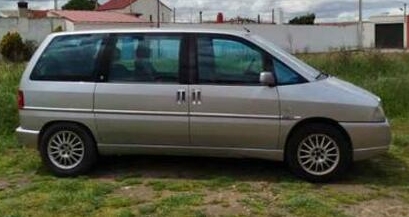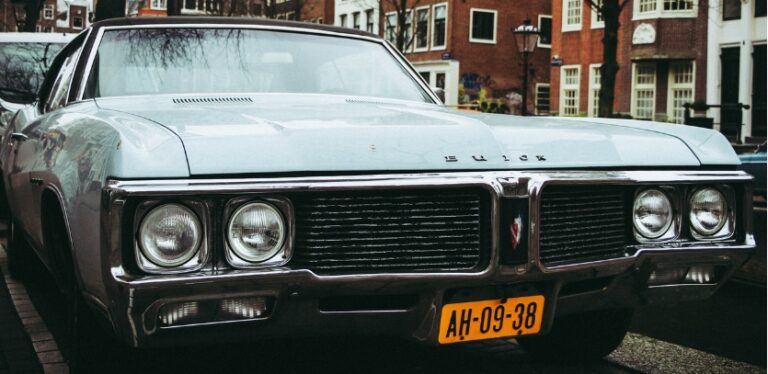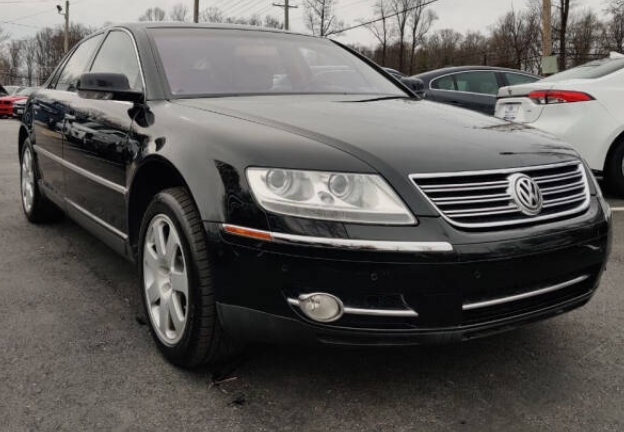The Evolution of the Lancia Zeta, Italy’s Diplomatic MPV
In the annals of automotive history, the Lancia brand conjures images of rally-dominating legends like the Stratos and Delta Integrale, or elegant GTs such as the Aurelia and Flaminia. Yet, nestled within this storied lineage is a vehicle that eschewed racetrack glory for the dignified duty of transporting families in quiet, Italian luxury: the Lancia Zeta. Produced from 1994 to 2002, the Zeta was Lancia’s answer to the booming multi-purpose vehicle (MPV) market of the 1990s. More than a mere people-carrier, it was an exercise in brand differentiation, a testament to Lancia’s ability to infuse even the most practical of automotive templates with an air of sophistication and comfort.
The Genesis: A Pan-European Collaboration
The story of the Lancia Zeta begins not in Turin, but in Valenciennes, France, at the Sevel Nord (Société Européenne de Véhicules Légers) factory. The early 1990s saw the meteoric rise of the MPV, pioneered by the Renault Espace. Recognizing the immense development costs of creating an all-new platform, the Fiat Group (parent company of Lancia) and the PSA Group (Peugeot and Citroën) deepened their long-standing partnership. The result was the “Eurovan” project, an ambitious platform-sharing venture to create a family of four distinct-yet-related MPVs.
This collaboration would spawn the Peugeot 806, Citroën Evasion, Fiat Ulysse, and the most premium of the quartet, the Lancia Zeta. While all four shared their core chassis, drivetrain, and trademark sliding rear doors, each brand was tasked with instilling its own identity through unique front and rear styling, interior appointments, and market positioning. For Lancia, the brief was clear: create the flagship, the version for the discerning professional, the diplomat, or the executive with a family. The Zeta was to be the Eurovan in a tailored Italian suit.
The Debut: The First Generation (1994-1998)
The Lancia Zeta made its official debut at the Turin Motor Show in 1994, entering production shortly after. From the outset, its visual differentiators were subtle but effective. The front fascia was pure Lancia, dominated by the classic chrome-shield grille that gave it an immediate sense of prestige and connection to the wider Lancia family, such as the contemporary Kappa saloon. The headlamps were uniquely shaped, distinct from its French and Italian siblings, lending it a more formal, assertive presence. At the rear, the taillight design was also bespoke to the Zeta, completing a look that was cohesive and elegantly understated.
Inside, however, is where the Zeta truly distinguished itself. While the dashboard architecture was shared across the Eurovans, Lancia’s choice of materials elevated the cabin to another level. The defining feature was the widespread use of Alcantara, a plush, suede-like microfiber that has long been a hallmark of Lancia’s premium models. It covered the seats, door cards, and often parts of the dashboard, providing a tactile richness and warmth absent in the more utilitarian cabins of its relatives. This was often complemented by polished briarwood-effect trim, reinforcing the atmosphere of a luxury saloon rather than a family van.
The Zeta was launched with a range of engines designed to offer a balance of performance and economy.
Models and Trim Levels (1994-1998):
Lancia Zeta 2.0 i.e. (LE, LS, LX): This was the entry-point petrol model, powered by a 1998cc 8-valve inline-four engine from the PSA family (XU10 J2C). It produced a respectable 121 horsepower (90 kW), providing adequate performance for a vehicle of its size. It was available with a 5-speed manual or a 4-speed automatic transmission.
Lancia Zeta 2.0 Turbo (LS, LX): For those seeking more spirited performance, Lancia offered a turbocharged version of the 2.0-litre engine (XU10 J2TE). This unit significantly boosted output to 147 horsepower (108 kW) and delivered a much stronger wave of torque, making it an effortless long-distance cruiser, especially when fully laden. This engine was exclusively paired with a 5-speed manual gearbox.
Lancia Zeta 2.1 TD (LS, LX): In diesel-loving Europe, a robust turbodiesel was essential. The Zeta utilized PSA’s proven 2088cc (2.1-litre) 12-valve XUD11 BTE turbodiesel engine. Producing 109 horsepower (80 kW) and a generous amount of torque, it was the pragmatic choice, offering excellent fuel economy and relaxed cruising capabilities. It was available only with a 5-speed manual transmission.
The trim levels reflected a clear hierarchy of luxury:
LE: The base model, though “base” in Lancia terms was still well-equipped for the era. It typically included power steering, central locking, and electric front windows.
LS: The mid-range trim added desirable features such as alloy wheels, air conditioning, and often the signature Alcantara upholstery as standard.
LX: The flagship trim level was a showcase of comfort. It built upon the LS with features like automatic climate control, a six-speaker stereo system, electrically adjustable and heated seats, and sometimes even a mobile phone pre-installation. The LX was the definitive expression of the Zeta’s luxury mission.
Throughout this period, the Zeta solidified its identity as the most refined and comfortable of the Eurovans, appealing to a niche market that valued elegance as much as practicality.
The Evolution: The Facelift and Modernization (1999-2002)
By the late 1990s, the automotive landscape was changing rapidly. Engine technology, in particular, was advancing, with the advent of common-rail diesel injection and more efficient multi-valve petrol engines. To keep the Eurovan family competitive, a significant mid-cycle refresh was introduced for the 1999 model year.
The updated Lancia Zeta was visually distinguished by a subtle but effective facelift. The headlights were replaced with new, clear-lensed units that offered better illumination and a more modern look. The grille was slightly revised, though it retained its iconic Lancia shield. The interior also received minor updates, with a refreshed instrument cluster, improved switchgear, and new upholstery options that kept the cabin feeling contemporary.
The most important changes, however, were under the bonnet. The engine lineup was thoroughly overhauled to meet new emissions standards (Euro 2 and later Euro 3) and to offer superior performance, refinement, and efficiency.
Updated Models and Trim Levels (1999-2002):
The previous engines were phased out and replaced with a new generation of powerplants.
Lancia Zeta 2.0 16v (LS, LX): The old 8-valve petrol engines were replaced by a modern 1997cc 16-valve engine (PSA EW10 J4). This new unit produced a much healthier 136 horsepower (100 kW), offering a significant improvement in performance and responsiveness over the old naturally aspirated 2.0, while being more fuel-efficient than the outgoing turbo model. It was available with both a 5-speed manual and a 4-speed automatic transmission.
Lancia Zeta 2.0 JTD (LS, LX): This was arguably the most crucial update. The old 2.1 TD was replaced with Fiat’s highly acclaimed 1997cc 8-valve common-rail turbodiesel, known as the JTD (or HDi in its PSA application). While its peak power of 109 horsepower (80 kW) was identical to the old engine, its delivery was transformative. The common-rail technology made it vastly quieter, smoother, and more flexible, with more torque available at lower revs. It provided superior fuel economy and drastically reduced emissions, making it the default choice for the majority of buyers. This engine was paired exclusively with a 5-speed manual gearbox.
The trim level structure of LS and LX was largely maintained, but the standard equipment list was enhanced. Safety was improved with the addition of side airbags, and features like automatic wipers and upgraded audio systems became more common. The Zeta continued its tradition of offering a level of standard luxury equipment that was often optional on its competitors.
.

.
End of the Line and Legacy
Production of the first-generation Lancia Zeta, along with its Eurovan siblings, ceased in 2002. The entire platform was retired to make way for a completely new, larger, and more sophisticated second generation of Eurovans. Lancia’s successor was the Phedra, a vehicle that took the Zeta’s luxury-MPV concept to an even higher plane.
Over its eight-year production run, the Lancia Zeta was never a high-volume seller. It was, by design, a niche product. It existed for buyers who needed the space and versatility of an MPV but were unwilling to compromise on the comfort, material quality, and understated elegance associated with a premium saloon.
Today, the Lancia Zeta is a rare sight on the road, an often-overlooked chapter in the brand’s history. Yet, its legacy is significant. It stands as a prime example of successful badge engineering, where a shared platform was genuinely elevated by brand-specific values. It proved that practicality did not have to be pedestrian. In a sea of functional but mundane people-carriers, the Lancia Zeta was a quiet statement of style—a comfortable, Alcantara-lined sanctuary that carried the spirit of Italian luxury on every school run, family holiday, and business trip. It was, and remains, the unsung diplomat of the MPV world.







